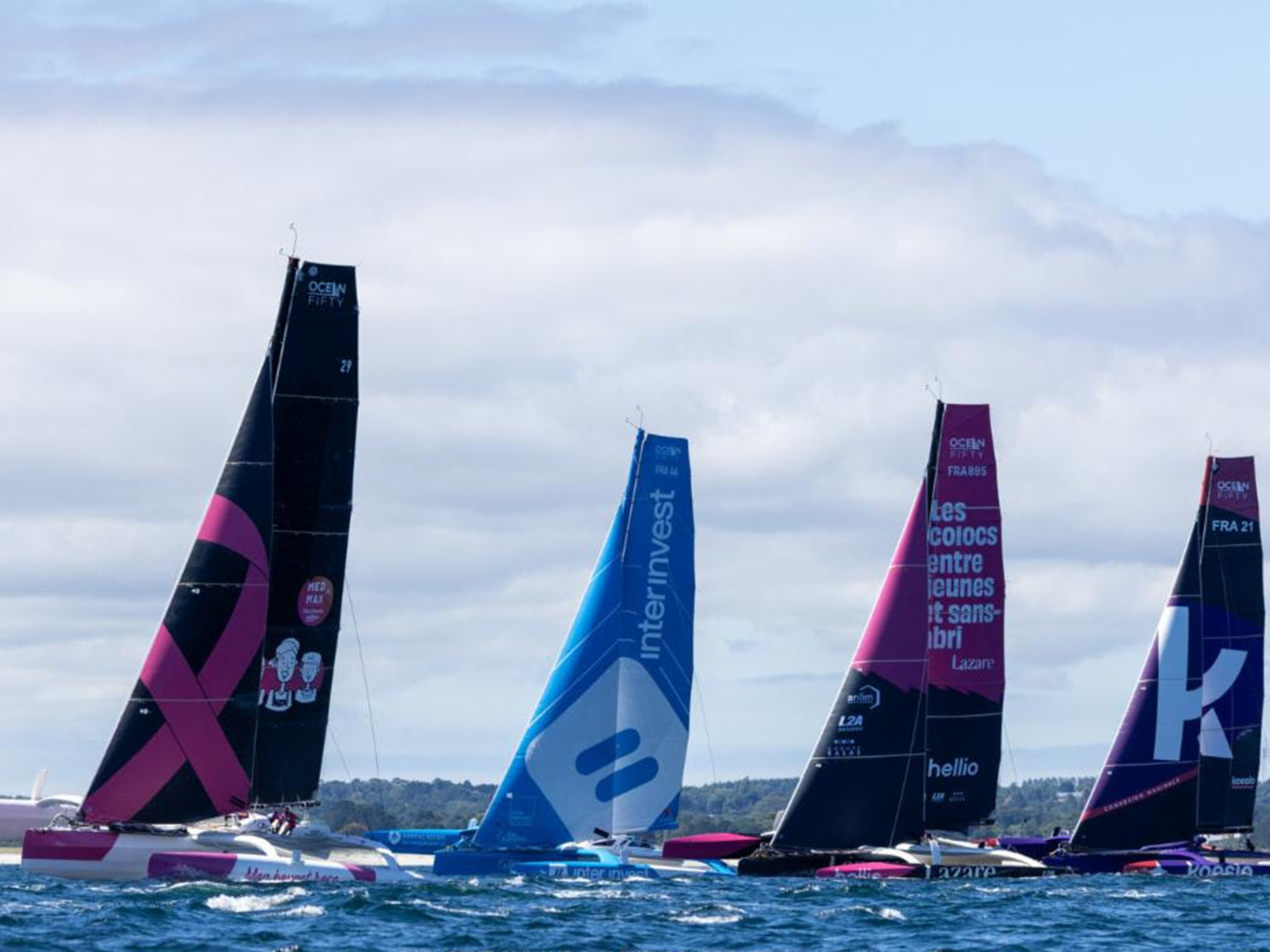Ocean Fiftys Teach Big Lessons to Offshore Sailors

The Ocean Fifty Class: A Unique Blend of Performance and Practicality
The Ocean Fifty Series encompasses both inshore grand prix and offshore events, with one of the most anticipated races being the Rolex Fastnet Race. As the 2025 edition of this iconic offshore event marks its centennial, a fleet of 50-foot trimarans known as the Ocean Fifty class is set to make its mark. These French-designed multihulls, previously called Multi50s, are now rebranded as Ocean Fiftys. They have gained attention for their high-performance capabilities and are racing doublehanded in the Fastnet this year as part of an expanding international circuit that includes both inshore and offshore events.
This growing series culminates in the Transat Café L’OR, formerly known as the Transat Jacques Vabre. The Ocean Fifty fleet has never been larger, with nine boats competing in the Rolex Fastnet Race and ten in October’s Transat Café L’OR. This expansion highlights the increasing popularity of these vessels among sailors seeking both speed and reliability.
A Look at the Competitors
Among the returning competitors is Luke Berry aboard Le Rire Médecin–Lamotte, one of the older Ocean Fiftys in the fleet but still a proven performer offshore. Originally launched in 2009 as Actual, the boat has won prestigious races like the Route du Rhum and the Transat Jacques Vabre under different skippers. Berry and co-skipper Antoine Joubert claimed victory in the Fastnet in 2023 and are returning to defend their title in a more competitive field.
Berry, who grew up in France and transitioned from Class 40 racing, understands the challenges of offshore sailing. While Ocean Fifty crews focus on performance, they must also manage energy, troubleshoot complex systems, monitor weather, and work together under pressure—skills that are crucial for cruising couples and passagemakers on long passages.
Engineering Marvels with Constraints
The Ocean Fifty boats are marvels of modern engineering, designed to be stiff, lightweight, and powerful. However, the class operates under a strict box rule that limits certain aspects of design. For instance, foiling is not allowed due to mandatory C-foils. Sail inventories are restricted and focused on durability, while many teams use older boats that remain competitive through smart updates and strong sailing.
The 2025 Rolex Fastnet Race features nine Ocean Fiftys, marking the largest turnout for the class in the race's history. Notable entries include:
- Koesio, skippered by Erwan Le Roux and currently leading the Ocean Fifty Series.
- Lazare, co-skippered by Vendée Globe hopeful Tanguy le Turquais.
- Inter Invest, the 2024 series champion, now helmed by Matthieu Perraut and Jean-Baptiste Gellée.
Social Missions and Community Impact
Several teams also use their platforms for social missions. Upwind by MerConcept, backed by 11th Hour Racing, is dedicated to developing female offshore sailors. Lazare raises awareness for housing insecurity, while Mon Bonnet Rose campaigns for women's cancer awareness. These efforts highlight the broader impact of the Ocean Fifty class beyond just competition.
Lessons for Cruisers
Whether racing or cruising, the same fundamentals apply: readiness, resilience, and respect for the sea. For offshore sailors looking to improve their skills, there is much to learn from watching the Ocean Fifty fleet charge down the course to Fastnet Rock and beyond.
Key Takeaways for Cruisers
- Redundancy = Reliability: Ocean Fifty sailors plan for system failures and back themselves up. Cruisers should do the same, especially with power, steering, and comms.
- Energy Management Is Everything: Even in a race, sailors are conservative with battery loads and smart about solar, hydro, and generator use—an everyday challenge for liveaboards.
- Weather Strategy Is Constant: Ocean Fifty crews are always monitoring conditions and updating routes. Cruisers should take a page from their book: plan, track, and adapt.
- Teamwork Matters: Doublehanded Ocean Fifty crews thrive on communication and trust. For cruising couples, refining roles and decision-making improves safety and sanity offshore.
- Speed = Safety: While cruising boats don't aim for 20+ knots, learning to trim well, reduce drag, and sail efficiently can widen weather windows and reduce fatigue.
Post a Comment for "Ocean Fiftys Teach Big Lessons to Offshore Sailors"
Post a Comment